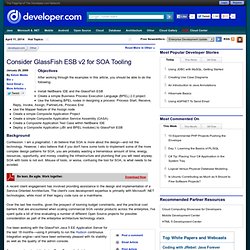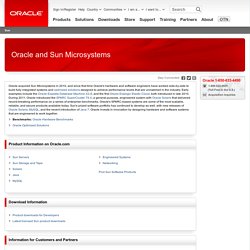

Why Mashups = (REST + Traditional SOA') * Web 2.0 : Blog the web. All that would change now is the HTTP action parameter.

This would basically equate to the database transaction or (CRUD Action - Create, Read, Update or Delete) that is wanted to be performed: RESTful web services have open been mentioned as alternatives to 'Traditional SOA' (SOAP / XML-RPC), however, I believe they need to work hand-in-hand to provide a mix of sources for Mashups (and Mashup editors) . With web services that are generally SOAP-based, the request and response are hidden. SOAP requests must be interpreted as they are received at the server to determine the operation to perform and the arguments required to perform that operation. They are generally passed through as a parameter, which is essentially a function/method call.
Consider-GlassFish-ESB-v2-for-SOA-Tooling. Objectives After working through the examples in this article, you should be able to do the following: Install NetBeans IDE and the GlassFish ESBCreate a simple Business Process Execution Language (BPEL) 2.0 projectUse the following BPEL nodes in designing a process: Process Start, Receive, Reply, Invoke, Assign, PartnerLink, Process EndUse the Mapper feature of the Assign nodeCreate a simple Composite Application ProjectCreate a simple Composite Application Service Assembly (CASA)Create a Composite Application Test Case within NetBeans IDEDeploy a Composite Application (JBI and BPEL modules) to GlassFish ESB Background Confession: I am a pragmatist.

GlassFish ESB Tutorial: A Gentle Introduction. Oracle acquired Sun Microsystems in 2010, and since that time Oracle's hardware and software engineers have worked side-by-side to build fully integrated systems and optimized solutions designed to achieve performance levels that are unmatched in the industry.

Early examples include the Oracle Exadata Database Machine X2-8, and the first Oracle Exalogic Elastic Cloud, both introduced in late 2010. During 2011, Oracle introduced the SPARC SuperCluster T4-4, a general-purpose, engineered system with Oracle Solaris that delivered record-breaking performance on a series of enterprise benchmarks. Oracle's SPARC-based systems are some of the most scalable, reliable, and secure products available today.
Sun's prized software portfolio has continued to develop as well, with new releases of Oracle Solaris, MySQL, and the recent introduction of Java 7. Tutorial: Event Processing with GlassFish ESB.